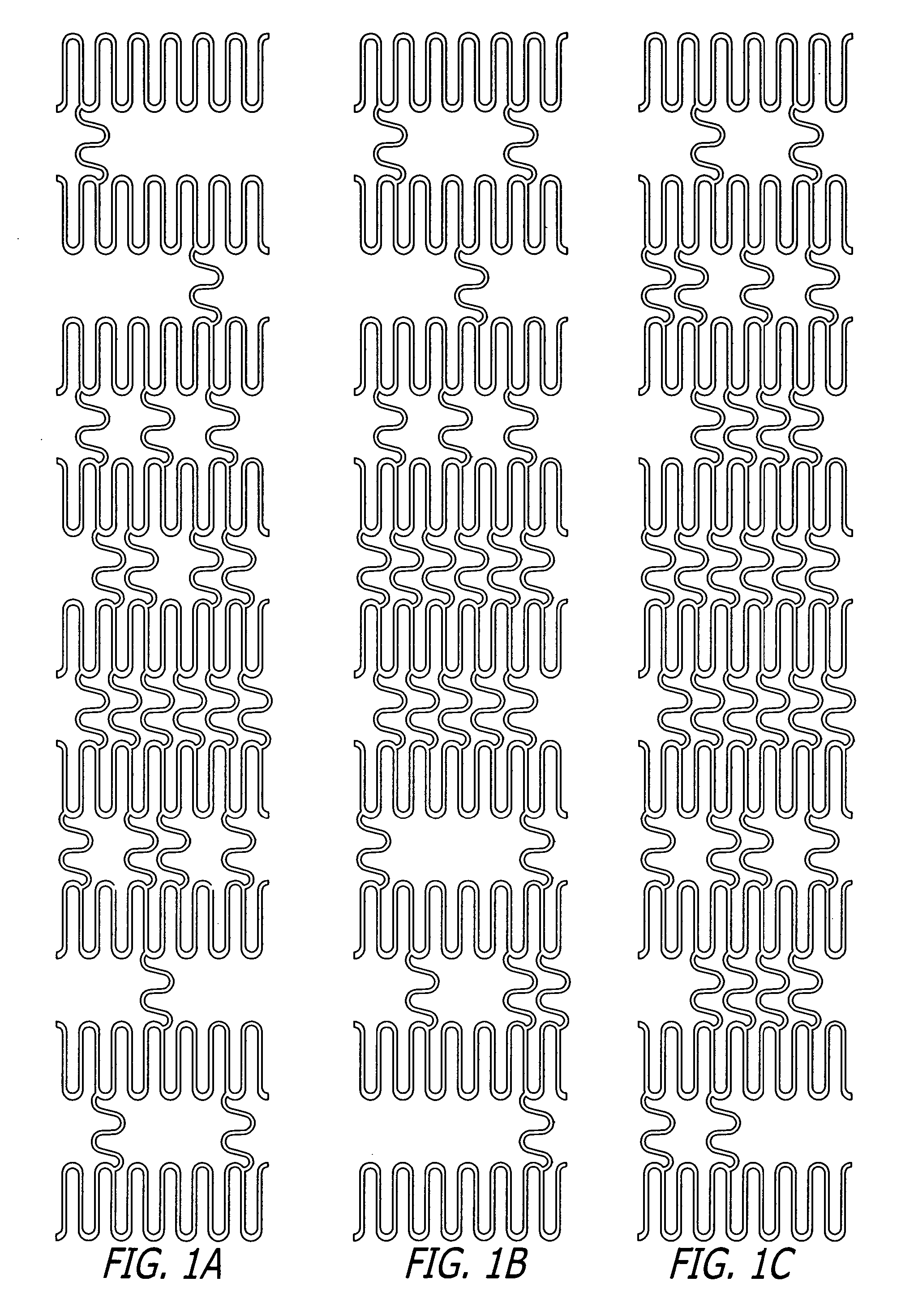Lumen-supporting stents and methods for creating lumen-supporting stents with various open/closed designs
- Summary
- Abstract
- Description
- Claims
- Application Information
AI Technical Summary
Benefits of technology
Problems solved by technology
Method used
Image
Examples
Embodiment Construction
[0036] U.S. Pat. Nos. 5,292,331 and 5,135,536 to Boneau and Hilstead respectively, and the references cited therein, make it clear that stents can be configured and constructed in many different ways. The present invention is applicable to all known stent designs, and it will be readily apparent from the following discussion of several exemplary designs how the invention can be applied to any type of stent construction.
[0037] Illustrative stents of the present invention are included in FIGS. 1-6. The sections of the stents of the present invention can have more or less undulations within a section or more or less sections overall than are shown in the FIGS. 1-6, but the simplified depictions shown herein are sufficient to illustrate the present invention. As stated earlier, the terms “open” and “closed” are to be interpreted as relative to each other within a particular stent. Thus, a portion of a stent that is closed in one stent may be “open” when compared to the closed portion o...
PUM
 Login to View More
Login to View More Abstract
Description
Claims
Application Information
 Login to View More
Login to View More - R&D
- Intellectual Property
- Life Sciences
- Materials
- Tech Scout
- Unparalleled Data Quality
- Higher Quality Content
- 60% Fewer Hallucinations
Browse by: Latest US Patents, China's latest patents, Technical Efficacy Thesaurus, Application Domain, Technology Topic, Popular Technical Reports.
© 2025 PatSnap. All rights reserved.Legal|Privacy policy|Modern Slavery Act Transparency Statement|Sitemap|About US| Contact US: help@patsnap.com



